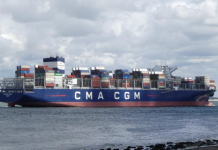
The landscape of US-China trade has undergone a dramatic transformation since 2018, when tariff policies implemented during the Trump administration and maintained under Biden began reshaping global supply chains. With these policies affecting over US$380 billion worth of trade and resulting in US$79 billion in tariffs, businesses have been forced to seek creative solutions to maintain their competitive edge.
VesselBot analysis of shipping data across air, sea, and road transport has revealed an unexpected beneficiary of this trade tension: Mexico.
In the first half of 2024, we observed a remarkable shift in container shipping patterns that signals a fundamental change in how goods move from Asia to North America. The data shows a 61.5% year-over-year increase in TEU volume from China to Mexico during January-June 2024, with January alone seeing a staggering 64.4% increase compared to the previous year.
This surge has transformed Mexican ports into bustling hubs of international trade. Manzanillo port reported a 40% increase in imports during the first half of 2024, while Lázaro Cárdenas saw an extraordinary 200% growth. Meanwhile, direct shipments from China to the US experienced a significant decline, reaching their lowest point in April 2024.
Through analysis of transportation networks and cross-border logistics data, we’ve tracked how products move from Mexican ports into the US market.
The pattern is clear: many products arriving at Mexican ports are subsequently transported into the US by truck, leveraging Mexico’s geographical proximity and well-established cross-border logistics networks. This trend has prompted major industry players to adapt their infrastructure.
Maersk, for instance, responded by opening a new facility in Tijuana in March 2024, followed by a 402,000 ft² facility in El Paso, Texas, in September 2024.
Our analysis of product-level data shows that motor accessories lead the way in Mexico-to-US shipments, with over 10,050 shipments recorded between January and May 2024. Tijuana has emerged as the busiest customs location along the border, processing the largest volume of cross-border shipments.
The environmental impact of these shifting trade patterns is significant. By analyzing factors such as shipment volumes, distances traveled, and truck utilization rates, we’ve identified concerning increases in CO2 emissions from cross-border truck traffic. As this new trade dynamic becomes more established, the industry must address these environmental impacts through the adoption of greener technologies and more efficient transportation networks.
The implications of this trade pattern shift extend beyond logistics. It represents a fundamental restructuring of global supply chains in response to geopolitical pressures.
While this adaptation demonstrates the resilience and flexibility of international trade, it also raises important questions about the long-term sustainability of such arrangements.
Looking ahead, we expect this trend to continue evolving as businesses further optimize their supply chains in response to ongoing trade tensions. The challenge for the industry will be balancing the economic advantages of this new trade route with environmental responsibilities and operational efficiency.
This transformation of North American logistics underscores a crucial lesson: in the face of trade barriers, the global supply chain doesn’t simply halt – it adapts, finds new pathways, and continues to flow.
The analysis was provided by VesselBot, a technology company that brings transparency to value chain emissions through its Supply Chain Sustainability Platform.





